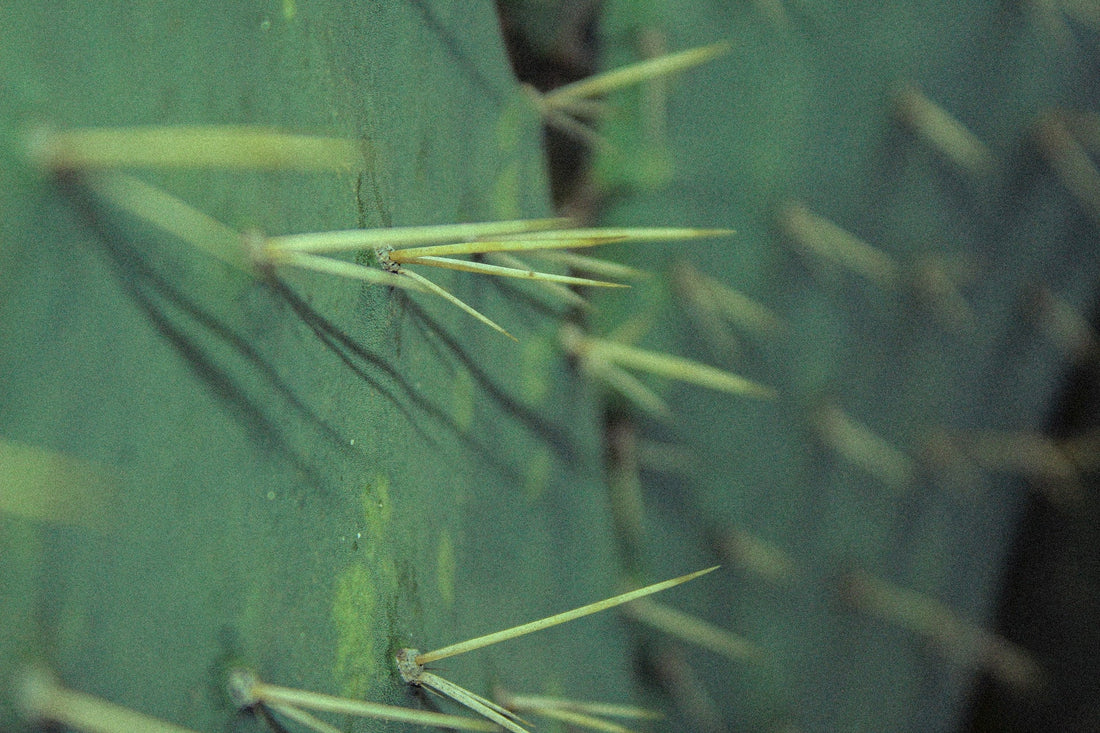Discover the diversity of Mexican flora: Nopal and Agave In Mexico you will find an incredible variety of plants that are deeply rooted in the country's culture. The nopal cactus, a symbol of versatility, is an example of this. I want you too Introduce mezcal , a drink made from agave, another notable Mexican plant. While nopal has its place in the kitchen, agave is the star in the world of spirits.
The Nopal cactus belongs to the Opuntia subgroup and is also known as the prickly pear or paddle cactus. It can be recognized by its wide, flat, branched, cushion-shaped shoots, which are covered in spines and bear magnificent yellow or red flowers in summer. This creates the edible prickly pears, whose fruit colors vary in shades of red, green and yellow-orange. The juicy fruits are ripe in September and can be eaten raw or cooked and used in jams and jellies. The young shoots can also be eaten raw or cooked and have a fresh lemon flavor.

Where does the prickly pear come from?
Prickly pear cacti are also common in the sandy coastal areas of the east coast of Florida to southern Connecticut and as far south as the Caribbean and the Bahamas. The prickly pear cactus also occurs in the sandy prairies of the Midwest around major rivers such as the Mississippi, Illinois and Ohio Rivers. The natural occurrence of the prickly pear cactus is in the hilly regions of southern Illinois and in the sandy and rocky regions of northern Illinois.
The History of the Nopal Cactus
The Nopal cactus is the most commonly cultivated Opuntia species. In the pre-Columbian period when it was discovered by Columbus, the cactus spread throughout the Americas. At that time, the natives used both the young shoots and the prickly pears for food. They also used the prickly pear as a traditional medicinal plant and as a dye that they used in their rituals. One of the first explorers of the American Southwest, Cabeza de Vaca, reported around 1500 that the indigenous peoples celebrated the harvest of the prickly pear with festivals similar to the current Carnival.
In the post-Columbian period, the prickly pear cactus spread throughout the world, primarily because sailors valued the nopal cactus effects as a preventative against scurvy. The Nopales quickly became naturalized throughout the Mediterranean, as many shipping routes began or ended in the port cities. Because the prickly pear has healthy components, it has also become increasingly important as a contemporary and successful dietary supplement in recent years.
Effects and health benefits of the prickly pear cactus
Antioxidant content
Antioxidants protect our cells from damage caused by free radicals. The Nopal cactus is rich in antioxidants and reduces the burden of free radicals.
Antiviral remedy
Protection for the nerve cells
Treatment of enlarged prostate
Lowering cholesterol levels
Eliminate hangover symptoms

Immerse yourself in the diversity of Mexico
Mezcal , just like the nopal cactus, represents Mexico's rich culture and history. Discover an authentic piece of Mexico and its diverse world of flavors with our Mezcal.
Regulation of blood sugar levels
Cultivation of the Nopal cactus
If you want to grow a Nopal cactus at home, you can cultivate it either by sowing in the spring or using cuttings. Because it can sometimes be difficult to buy prickly pear seeds, they can also be obtained from a ripe prickly pear. Cultivation is much quicker with cuttings that are carefully cut off from the cactus. The interfaces must dry until they have healed. Only then can the cuttings be planted. The prickly pear cactus requires sandy, well-drained and nutrient-rich soil as well as an airy, sunny place. Since it does not tolerate frost, it should be planted in a large flower pot that can be stored frost-proof in winter.
Uses and eating habits of the prickly pear
The prickly pears are prepared as follows: First, both ends of the fruit are cut off. The skin is then removed by making an incision along the entire fig. Then the skin is peeled off with your fingers. The pulp is covered with countless seeds that can be eaten. The meat can be eaten raw or pressed through a sieve to make juice or jam.
Thanks to the cactus' diverse health benefits, there are also a number of medicinal uses. To get the best benefits, you should eat pure prickly pear. You can also take them as dietary supplements in the form of capsules, powder, extracts or liquid form. To rule out any possible side effects, it is safest to eat a raw prickly pear instead of a dietary supplement.
As a food, the side effects of edible cactus are significantly lower than those of a dietary supplement. Although dietary supplements made from prickly pear are considered healthy and safe, more evidence needs to be provided. If you want to buy a product with the active ingredients of the Nopales cactus, you should choose it carefully.

Tradition meets your enjoyment: Mezcal with Jicara In our bundle offer, we combine our first-class Mezcal with a Jicara, the traditional drinking bowl. Enjoy mezcal the authentic way and experience a piece of Mexican drinking culture.


